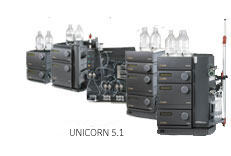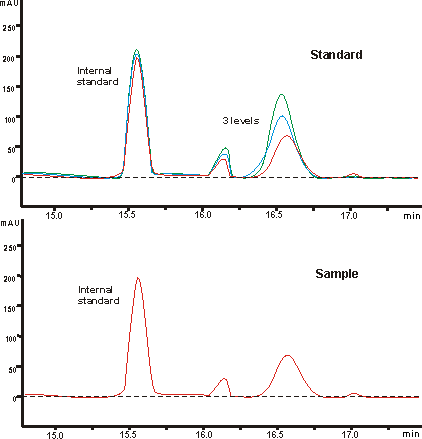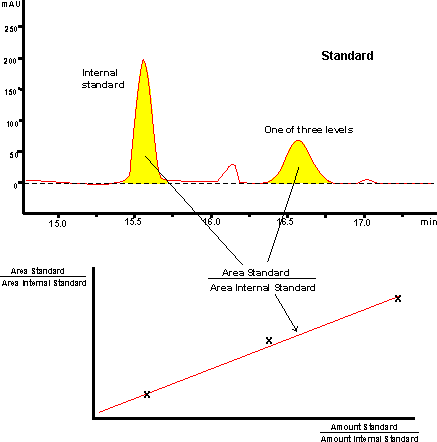

|
|

|
|
Internal standard quantitation
|

|
|
General information

|
Internal standard quantitation uses
peak tables prepared from the standard, similar to the External standard quantitation.
However, a fixed quantity of an additional component is added to
every separation run, including the sample. The peak sizes of the
standards and the sample are then related to the peak size of the internal
standards to compensate for any changes that may have occurred between the
runs.
|
|
|
|
|
General assumption

|
The internal standard technique relies on the assumption that
any changes in the injected amount of the component(s) of interest,
e.g. due to sample preparation losses, correspond to equal changes
in the injected amount of the internal standard component.
|
|
|
|
|
Advantages

|
Internal standard quantitation reduces
errors that are caused by changes in the system between successive
runs with the sample and the standard concentration levels. For
example, there may be unpredictable losses during the sample preparation
procedure or unintentional changes in the amounts that are injected.
|
|
|
|
|
What is a suitable internal standard?

|
A suitable internal
standard must meet the following conditions:
-
It must be well separated
from the components in the sample (not just from the components
of interest).
-
It must not be
present naturally in the sample(s).
-
It must have similar chemical properties to the
component(s) of interest.
To be able to compensate for losses during the sample preparation,
all the standard concentration levels must be subjected to the same
sample preparation procedure as the samples.
Note: If there are
several components of interest, they must all be chemically similar.
|
|
|
|
|
How to perform Internal standard quantitation

|
The
table below describes briefly how Internal
standard quantitation is performed.
|
Step
|
Action
|
|
1
|
Prepare a series of concentration levels from the standard.
|
|
2
|
Add an additional component, the internal standard,
in the same concentration to all the standards and to the sample.
|
|
3
|
Perform a run for each standard and the sample.
|
|
4
|
Integrate the curves to produce a peak table for all
standard runs and for the sample.
Result: Each curve
contains a peak from the internal standard. Changes in the size
of the internal standard peak indicate changes in the system.
See illustration below:

|
|
5
|
See illustration below:

|
|
6
|
-
Prepare data
from the sample in the same way as the data from the standard runs
to produce peak sizes relative to the internal standard peak size.
-
The resulting relative value is applied to the calibration
curve to determine the amount and concentration of the component
of interest.
See illustration below:

|
|
|
|
|
|
Reliability

|
Internal standard quantitation
is potentially the most reliable of the quantitation techniques.
However, if the internal standard component is not selected carefully, the
reliability will probably be worse than with the external standard
technique. There are some specific factors that can affect the reliability:
-
There is an increased
risk of overlap when the extra component (the internal standard)
is added if the sample contains many peaks.
-
The addition of the internal standard must be accurate
in both the standards and samples, otherwise, the precision of the
quantitation will be reduced dramatically.
|
|
|
|
2005-06-15
|
|
|
